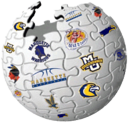The time has come to head back to math class and take a hard look at this year's Marquette basketball team and we're pleased to welcome the inimitable Dr. Blackheart back to Cracked Sidewalks for another guest post.
To a degree today's post builds on Dr. Blackheart's recent look at MU's defense. Yes, the good doctor's expertise is habit-forming. Thanks again, Doc.
---------------------------------------------------------------
Possessed
From the bar stools of Old World Third Street and the Third Ward to the keyboards of the interwebs, every MU fan with a right index finger (to order the next round or to hunt ‘n peck for that second exclamation point) has anointed themselves the next “Coach in Waiting” based upon their theories about MU’s defense. According to Statsheet, our vaunted Warriors are #1 in Big East play in offensive efficiency (1.18 PPP). MU can “tickle the twine” like no other in a tough, tough conference with great, experienced coaches who know how to shut a team down. Conversely, our defensive efficiency of 1.09 PPP is second to last, tied with a few conference standing bottom feeders after DePaul.
This is not news to anyone who follows Buzz’s Dozen as the sale of Tagamet in Greater Milwaukee is up 75% with all these “so close but yet so far” games. The boys really stepped up against Syracuse and are learning how to finish off opponents. However, our defensive efficiency still was not great (1.08) against the Orange, especially in the 2nd half where SU shot a blistering 68.2%. The outcome was favorable this weekend, but the symptoms of the patient are still present.
As a fan, I have always been most interested in strategy of coaches more than other aspect of the game. The Big East is the #1 competitive conference in the land, but the ability and creativity of the coaches are legendary. On top of that, the schedule and pressure are grueling with quick turnarounds, packed houses and national TV audiences. Word of a team or player strength or weakness travels quickly in today’s digital world. Being curious, I dove a little deeper into the advance stats on the internet to see what an opposing coach might see about MU that maybe isn’t so apparent by perusing the box score.
Beyond the Averages
Taking a step back, we discussed previously how Buzz uses his defense—like Lovie Smith’s in football-- to limit an opponent’s offense by pressuring for turnovers at pinch points in order to feed the energy of MU’s offensive juggernaut. One way to statistically define energy is by looking at the number of possessions. Last season, with MU’s make-up, Buzz wanted to limit possessions. This season, he wants to increase that energy--which is more his stated natural philosophy. To delve deeper, I took a look at each of our games to see how this looks in numbers.
First, I segmented games from this season into above average possession games (>69 per game) and those at/below the average. Here is what I found:
- MU is 7-2 in above average possession games.
- MU is 7-6 in games at or below that average.
- MU’s offensive efficiency in both segments of the games is almost exactly the same (1.16 vs. 1.17)
- MU defensive efficiency in fast paced games is 0.89, while average to slower paced games the statistic is 1.10. Ah, the magic bean: “Slow MU down and you can break them down!”
Buzz has always stressed a highly efficient offensive philosophy, predicated on paint touches. What did this offensive-defensive difference look like last season when MU wanted a slower paced game to fight starter attrition—with this leading to a record number of close games? The answer: the same. While the game possession average was down (65), fast and slow/average paced games saw MU with similar levels of offensive efficiency, but MU’s defensive efficiency was much lower (better) in faster paced games at 96.0 vs. 104.2 in slower grinders.
So, the chess game between coaches will continue: Brey stressing his “Burn Offense”, Pitino with the switching zones and the three quarters trap, Boeheim with the 2-3 zone, Calhoun slowing down Walker and putting their younglings in a position to score by working the shot clock. Upcoming, Nova likes a faster paced game as does Providence, but the remainder of the teams on the schedule like to take the air out of ball or are even paced. Buzz will try to feed the offensive vortex from the get-go.
My advice: Try Tum’s if the Tagamet is sold out.

No comments:
Post a Comment